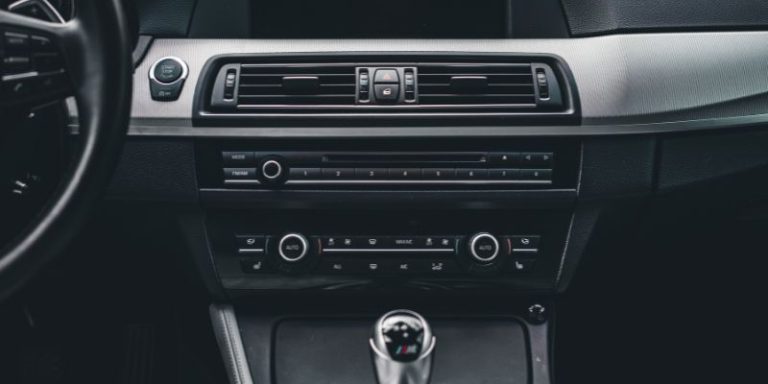How Many Cars in the Indy 500? Start Your Engines!
The Indy 500 typically features 33 cars each year. This iconic race is held at the Indianapolis Motor Speedway.
The Indianapolis 500, often called the Indy 500, stands as one of the most prestigious motorsport events globally. Taking place annually on Memorial Day weekend, it attracts top drivers and teams from around the world. With a rich history dating back to 1911, this race showcases high-speed competition and cutting-edge engineering.
Fans flock to the speedway, eager to witness thrilling overtakes and strategic pit stops. The event spans 500 miles, testing not just the speed but also the endurance of both drivers and their vehicles. The excitement and anticipation surrounding the race make it a highlight in the motorsports calendar.
The Origin Of The Indy 500
The Indy 500 began in 1911 at the Indianapolis Motor Speedway. This iconic race is known as the Brickyard. It earned this nickname due to its brick-paved surface. Only a small section of bricks remains today.
Traditions are important in the Indy 500. The race includes the traditional start with a famous anthem. The winner receives a laurel wreath and a cash prize. Early winners include Ray Harroun and Johnny Aitken. They started the legacy of speed and excitement.
| Year | Winner |
|---|---|
| 1911 | Ray Harroun |
| 1912 | Johnny Aitken |
Race Format And Qualifications
The Indy 500 features a unique race format that includes time trials. Time trials determine the starting positions for the race. Each driver competes to set the fastest time. The fastest drivers earn the best spots on the starting grid.
Bumping occurs during qualifications. If a slower driver fails to qualify, a faster driver takes their spot. This adds excitement and tension to the trials. Drivers aim to secure a place in the race.
The pole position is crucial. It allows a driver to start at the front. This position often leads to a better chance of winning. Securing the pole requires skill and speed. Drivers push their limits to achieve this goal.
Evolution Of Car Entries
The Indy 500 has seen many changes in car designs. Early models were roadsters. These cars had open wheels and were built for speed.
As technology advanced, the cars transformed into streamlined racers. New materials and designs improved performance significantly. Aerodynamics became crucial for winning races.
Modern cars are faster and safer. They feature advanced engine technology and better safety gear. The evolution of car entries shows how racing improves over time.
Breaking Down The Numbers
The Indy 500 has a maximum capacity of 33 cars. This limit ensures fair competition. Each car represents a unique team and driver.
Recent trends show varying car counts. In recent years, the number of entries has fluctuated. Teams often face challenges like funding and sponsorship. Despite this, interest in the race remains high.
| Year | Car Count |
|---|---|
| 2020 | 33 |
| 2021 | 33 |
| 2022 | 33 |
| 2023 | 32 |
Understanding these numbers helps fans appreciate the race’s history. The Indy 500 remains a prestigious event in motorsport.
Famous Cars And Drivers
The Indy 500 has seen many legendary cars and drivers. These vehicles are famous for their speed and design. Each year, fans cheer for their favorites.
Record-breaking performances amaze everyone. Drivers push the limits to achieve the fastest laps. Many cars have set records over the years.
Iconic vehicles include the Marlboro Team Penske cars and the Dallara chassis. These cars are known for their advanced technology and aerodynamics. Each car tells a story of innovation and racing history.
The Spectacle Of Race Day
The Indy 500 is one of the most exciting events in racing. Pre-race rituals create a thrilling atmosphere. Drivers prepare mentally and physically for the big day. Fans cheer for their favorite racers, adding to the excitement.
Each team performs special traditions. These may include prayers, team huddles, or good luck charms. The green flag signals the start of the race. It brings a rush of adrenaline for everyone involved.
The roar of engines fills the air. The excitement builds as cars take their positions. Fans can’t wait to see who will win the prestigious race. It’s a day filled with passion, speed, and unforgettable moments.
Strategy And Pit Stops
Fuel and tire management are critical in the Indy 500. Teams must decide when to refuel. They also need to choose the right tires for the race. This decision affects speed and safety.
During the race, pit stops can change everything. A quick pit stop means gaining valuable time. Teams practice to ensure every second counts. The pit crew plays a vital role in these stops.
Each member has a specific task. Some change tires, while others refuel the car. Quick communication is essential for success. A well-coordinated team can make a huge difference.
Victory Lane And Beyond
Winners at the Indy 500 celebrate in Victory Lane. They enjoy the famous milk tradition. This tradition started in 1936. Drivers drink milk right after the race. It symbolizes victory and tradition.
After sipping the milk, winners often give interviews. They share their joy and excitement. Fans love hearing their stories. Many drivers thank their teams and sponsors. They celebrate the hard work that led to this moment.
Some winners take a victory lap. They wave to the cheering crowd. This moment is a highlight of their career. Victory Lane and the milk tradition create lasting memories.
Frequently Asked Questions
How Many Cars Compete In The Indy 500?
The Indy 500 typically features 33 cars competing each year. This number has been consistent for decades, creating a thrilling race atmosphere. Each car represents a team and driver aiming for victory in this prestigious event.
What Is The History Of Car Entries In The Indy 500?
Since its inception in 1911, the Indy 500 has seen various entry numbers. In the early years, more than 40 cars often participated. Over time, the field was streamlined to enhance competition and safety, settling at 33 cars.
Are All Indy 500 Cars The Same?
While all cars conform to specific regulations, they differ in design and technology. Teams customize their vehicles for optimal performance, including aerodynamics and engine specifications. This diversity adds excitement and strategy to the race.
How Are Indy 500 Cars Selected?
Cars for the Indy 500 must qualify during a designated time. Drivers need to achieve a minimum speed to secure a spot in the race. This qualifying process ensures that only the fastest cars compete on race day.
Conclusion
The Indy 500 features 33 cars, making it an iconic event in motorsports. Each driver brings unique skills and strategies to the race. Understanding the number of cars helps fans appreciate the competition’s intensity. Keep following the Indy 500 for exciting updates and memorable moments in racing history.







